If you are reading this then it would appear you have found yourself in a bit of a pickle. Maybe you already own a dog and are thinking about getting a second one. Perhaps you have already chosen your rescue dog and are about to bring them home. Is company coming over and they are travelling with another dog in tow? Whatever the reason is, the bottom line is that you are about to be in a situation where you will have two dogs under your roof and you are not sure if they are going to get along with each other. In a perfect world you could just open the door and your two puppers would skip off into the sunset together: best friends. Unfortunately in the animal kingdom, that is not always the case. Dogs are very territorial and don’t usually react well to another dog encroaching on their territory. The goal of this article is to assist you in introducing your dog to another dog. By the end, you will be a master matchmaker and be able to introduce dogs that are even on the slightly more aggressive side of the spectrum.
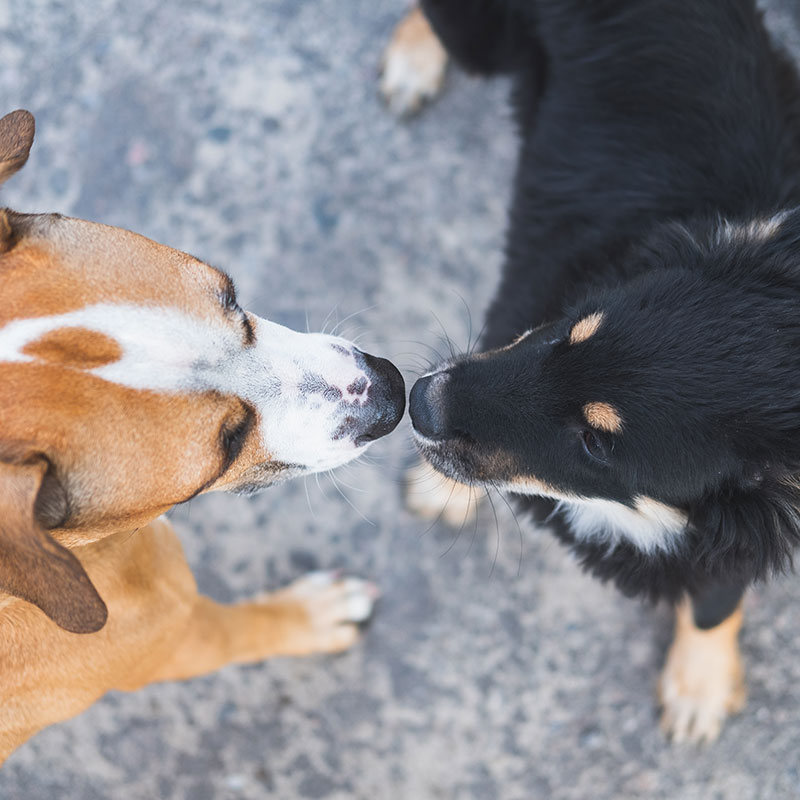
Find Neutral Grounds
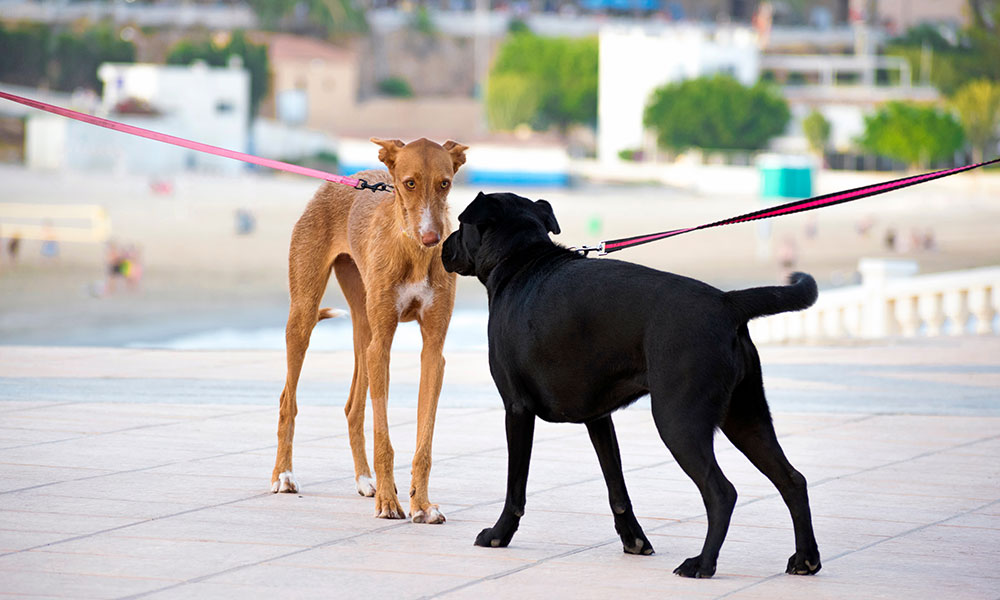
Like we mentioned at the beginning, dogs are territorial. Their home, certain parks and areas they frequent are, in their minds, theirs. If they don’t know you, they don’t want you there. This is why it’s important that you always work to find a neutral meeting place to conduct the first introduction between dogs. Eliminating those areas that your dog considers “their territory” is the best way to introduce dogs. Neutral ground will ensure that both animals are calm and have removed all instinct of territorial aggression from the meeting. Dog parks, even one your dog likes to visit, would be a great starting point for this interaction. Even though your dog may have been to a certain park before, the multitude of other dogs and scents means that this dog will view the space more as a social spot than their own personal spot. Once you have found a calm and safe starting point you are free to begin the meeting.
Begin The Meeting
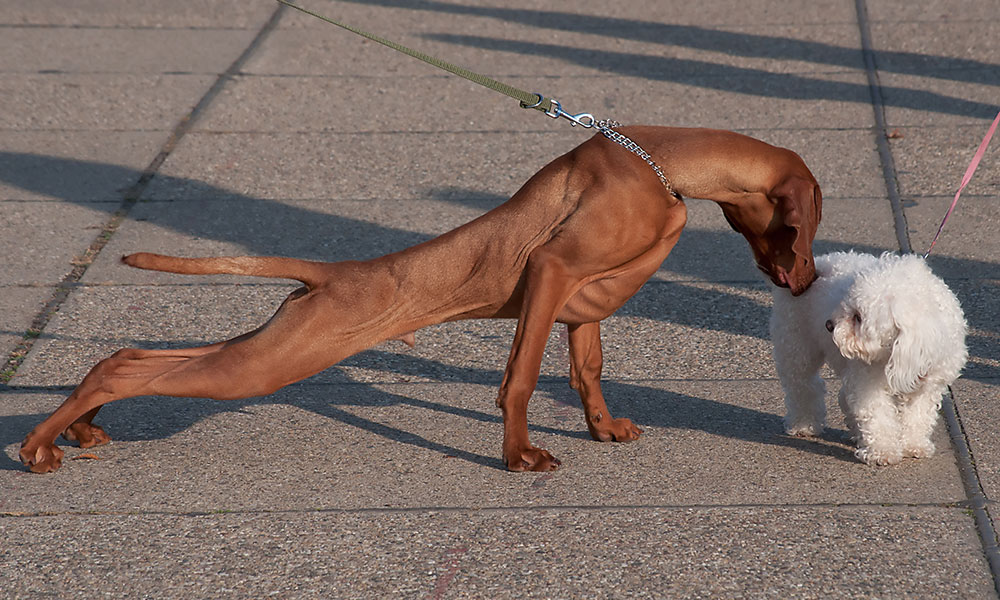
This is where patience and a calm atmosphere is going to become pertinent. You are the negotiator and law when it comes to this interaction. Introducing your dog to another dog constantly holds the risk of becoming aggressive, so be on your toes. To make sure that your meeting is going to begin calmly and that you have complete control, make sure that both dogs are secured to a harness and leash. The last thing you want to happen is to approach the situation with no reactive way to move them away from one another if needed. Even if your dog has a history of being lovable and friendly, you don’t want to take chances when you introduce them to another dog. The leash may wind up being unnecessary, but in this case it is always better to be safer than sorry.
Watch Body Language
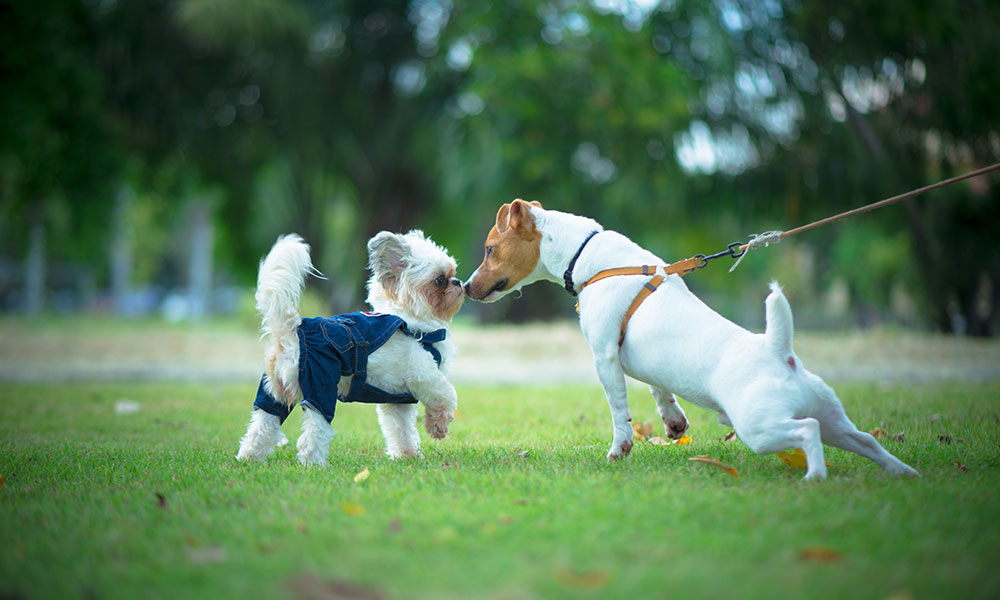
This is a big one. You can tell a lot about what a dog is thinking by the way they are standing and how their fur is reacting. A calm dog that is ready to become BFFs with their new friend will be bouncy, bowing and placing their paws in front of them in a playful manner. If this is the case (with both dogs) then your work here is done and you can kick back with a cold one. However, if they are maintaining lingering eye contact, for example, things are likely to turn sour rather fast. When dogs look at each other properly, they will lock eyes for an instant and then quickly look away. This is a sign of respect between the two animals. Lingering eye contact or staring at one another for an extended period of time is considered a challenge in the dog kingdom and can quickly turn aggressive.
Another way to gauge how the initial meeting is going is by the way their fur is standing or not standing. A calm dog will show no signs of rustled or agitated fur. Think of it like goosebumps (goose pimples) when you get excited or frightened. Our hair stands on end. The same goes for your dog, they just have more hair to stand on end. If your dog, or the other dog, is showing signs of puffed or standing-on-end hairs at the base of the tail or shoulders, then they are not responding well to the interaction and you should separate them immediately. Again, this is why a leash will come in handy.
An obvious sign that things are going less optimal than you originally hoped, are the clear signs of aggression in dogs that are relatively hard to miss. Barking, growling, exposed teeth, excess salivation and snapping are clear-cut signs that your dog does not want to know this new dog and more intense steps are needed to complete the interaction. When introducing dogs, it may just be too much for them to handle. Animals are random and sometimes they are too territorial to allow another member into their home-pack. If you are noticing these signs with your dog when trying to introduce them to another dog, hiring a certified trainer may be your only option.
Take A Walk
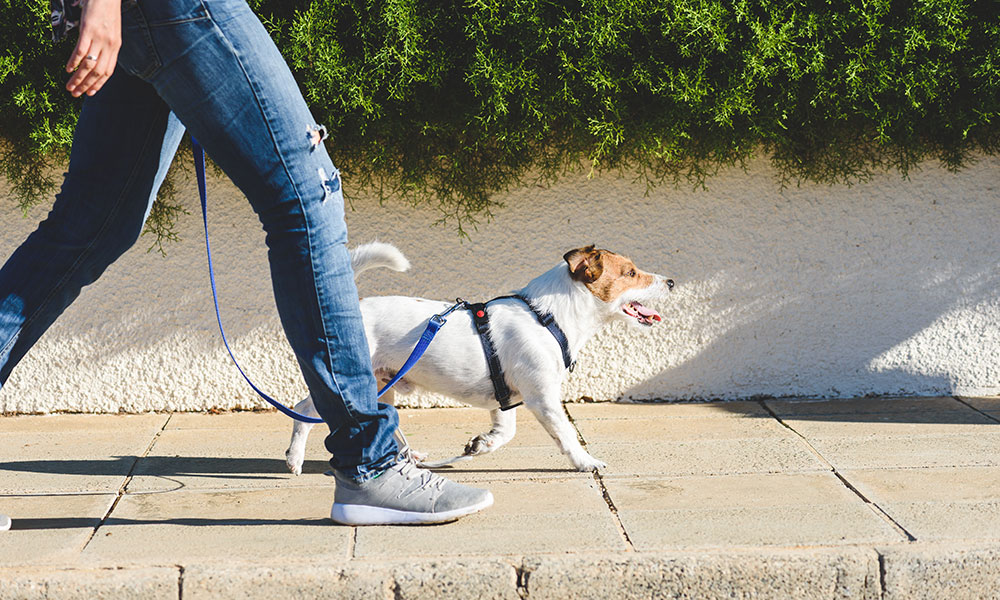
This is the best way to introduce your dog to another dog and a great tactic if one or both dogs are aggressive. Unfortunately, it’s not just as simple as “taking a walk”. You are going to need to take a special walk that will ease both parties into a meeting while keeping them calm and not exacerbating things into an aggressive situation. To start your walk, find a street that isn’t overly busy and you can comfortably walk on opposite sides. This will be your starting point. Begin the walk on opposite sides of the street, or opposite side walks, and let them calmly walk for a few blocks. They will be curious about one another, but be far enough away that they won’t feel their territory being challenged. After a few blocks, gradually move closer and closer to one another until you are walking parallel to the other dog. If tensions run high the closer you get, ease off and try again. If you successfully get closer to the other dog, use encouraging words and reward them for being a good boy/girl.
Another walking technique you can try is the single file approach. Using the same ideas as the parallel walk, you simply start the walk with one dog ahead and the other behind. Both on a leash and both beginning the walk as calmly as possible. If the dogs begin the walk calmly, allow the following dog to slowly get closer so that they can sniff a “hello”. A sniff to the rear end is a greeting in the canine kingdom so let it happen. One of the main causes of aggressive behavior between two dogs that don’t know each other is that they are unfamiliar with the other’s scent. When the “following” dog successfully sniffs the other, switch up the order. Let the other dog do the same. Repeat this action as many times as is needed before they begin acting friendly with one another. Reward each successful sniff with praise and a dog treat.
*Pro Tip* Whenever you are attempting to teach a dog anything, always do so with a pocket full of treats.
The last part of the walk may be an odd recommendation, but it is a necessary one. When or if one of the dogs you are trying to introduce relieves themselves, let the other sniff the urine or feces. Make sure the other dog is a safe distance away when this happens, but allowing them to become familiar with all the scents of the other dog is a great way to ensure that the eventual off-leash meeting will go more smoothly. Once you have followed these steps for how to introduce dogs, they should be best of friends by the end.
Be Positive
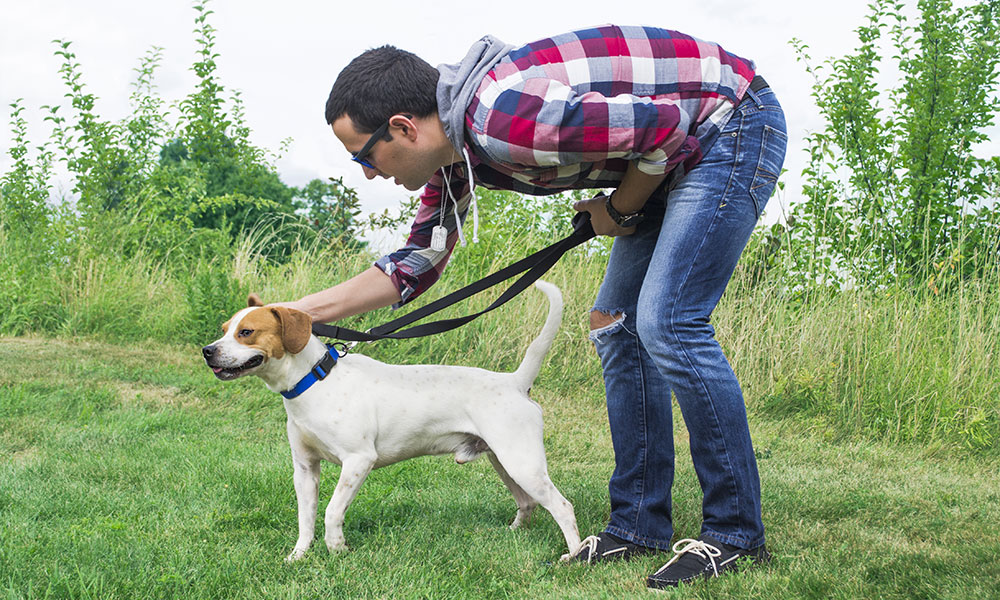
Of all the steps we have laid out in this article, a positive, patient and calm attitude is the most important. Your dog, and the foreign dog, are going to feed off of your energy most of all. If you become agitated, the dogs will become agitated. If you throw a temper tantrum and begin shouting, so will they. Training a dog is never a 20-minute exercise. It can take days, weeks, even months to properly obtain the outcome you are looking for. We understand that life and schedules can make this difficult and there is no shame in hiring an obedience coach to assist with this meeting. The odds are you will have to introduce your dog to a social environment again at some point are high and a coach will help you learn even more ways to successfully introduce your dog to another dog.
Conclusion
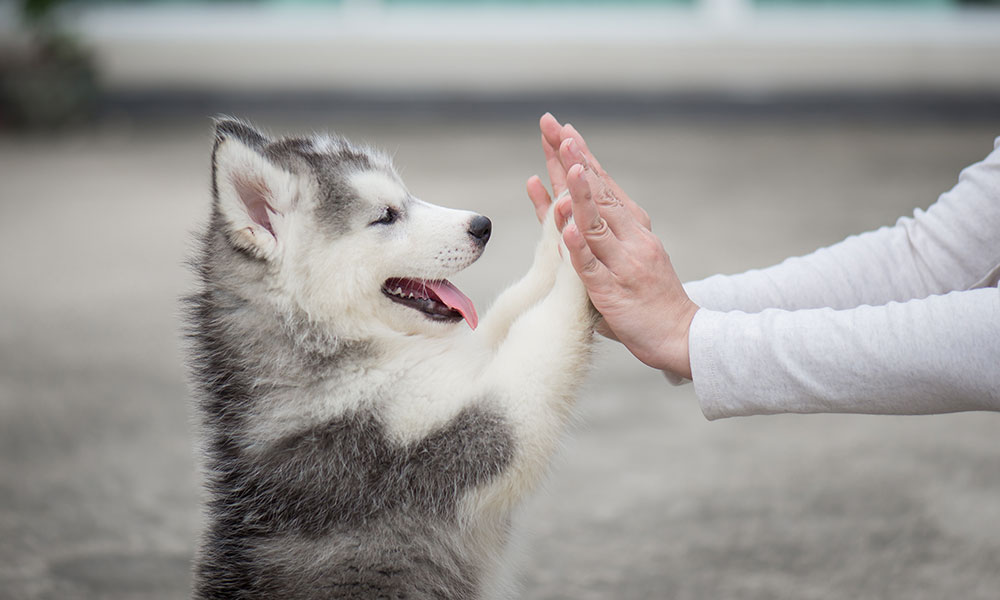
How to introduce two dogs to each other can be a stressful scenario before they are even in the same room. The last thing you want is to be pulling two angry dogs off of each other when you just want everyone to get along. But you have to enter the situation prepared and calm. Remember to be patient through the entire experience. Some dogs may not take to the first, the second or even the third walking attempt to introduce themselves. Sometimes you could repeat the walking technique half a dozen times before you begin to see results. That’s the name of the game. Dogs are, at their core, wolves. They are territorial and they live and die under the pack mentality. You are already a member of the pack. The alpha. They aim to please you and, most importantly, keep you and their territory safe. Introducing another dog to that territory and pack is not an easy feat, but by following these simple steps and remaining calm, you will successfully see your pack grow with every new dog you introduce your puppy to.
Frequently Asked Questions (FAQ)
How long does it take for dogs to get used to each other?
The amount of time it will take to have two dogs become used to each other is completely dependent on the dogs. More aggressive dogs could take more introduction sessions while others could become comfortable after only one. On average that should take 1-3 walks.
How do you introduce two dogs when one is aggressive?
Slowly. An aggressive dog should be slowly introduced to any new dogs over a longer period of time. Ensure the area you choose to have them meet is neutral to both parties.
How do you introduce two dogs in the house?
Introducing two dogs to each other in a house where one is the dominant alpha can lead to aggressive behavior. If you must use the house, separate them in different rooms and remove any food and water dishes to minimize territorial triggers.
How do you keep dogs from fighting?
A leash is the best tool in your arsenal when introducing two dogs to each other. If either dog begins to show teeth or you notice hair standing on end, pull them away from each other, calm them and try again.
How do you break up a dog fight?
Treats, dominance and a leash. You are the pack leader and you have to keep control of your pack. If two dogs begin fighting each other, you will want to use the leash to pull them off of one another and maintain a safe distance between them. Highly aggressive dogs may require professional coaching to establish a meeting.
Want to Learn More?
Download our AILMENT GUIDE NOW.
PLUS! all FIRST TIME buyers get 50% off their additional order. Visit verlota.com to get your discount code.





